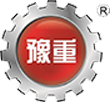Henan Zhonggong Group Helped CEEC Project Creating a Number of World Records
No. 6, Crane Industrial Park, Changyuan Town, Xinxiang City, Henan Province, China

Henan Zhonggong Group
Henan Tosta Machinery Co., Ltd.
Gantry Crane
Overhead Crane
Light Crane
Port & Container Crane
Launching Gantry Crane
Hoist & Crane Trolley
Crane Components
Electric Winch Overview
EOT Crane
EOT crane is a special type of equipment. Since its safety is very important, safety devices must be installed on the hoisting machinery. Different types of cranes should be installed with different types and performance of safety devices. The more common safety devices are as follows:
1. Over-hoist limiter of EOT crane
According to the regulations, the hoisting mechanism of the EOT crane must be equipped with an over-hoisting limiter. When the hook block is lifted 300mm away from the crane frame, the power supply of the motor can be automatically cut off and the motor will stop running. In this way, the safe operation of the crane can be ensured, and accidents such as wire rope being pulled off and heavy objects falling due to over-hoisting and lifting can be avoided.
2. The stroke limiter of the crane
It is a safety device adopted to prevent a collision accident caused by the crane approaching the end of the track, or a collision accident of two cranes on the same track. The travel limiter can ensure that when the distance between the end of the track is 200mm and the distance between the cranes is 500mm, the power supply is immediately cut off and the operation is stopped.
3. Automatic interlocking device of crane
There are many bare wires passing through the bridge crane. In order to prevent the maintenance personnel from getting electric shock, it is required to install an automatic interlocking device at the door of the warehouse leading from the cab to the frame (or bridge) to realize power failure during maintenance, and power on after maintenance to ensure the safety of maintenance operation.
4. The buffer of the crane
A buffer is a safety device that absorbs energy when a crane collides with an object, and works after the crane's brakes and end switches fail. When the crane is connected to the rail end column, ensure that the crane stops smoothly. Commonly used buffers on cranes include rubber buffers, spring buffers and hydraulic buffers.
5. Crane brake
The brake on the lifting equipment can make the lifting equipment stop working at any time and keep the heavy objects at any height during the lifting, translation and rotation process. It can not only prevent accidents, but also meet the work requirements.
There are many types of brakes, such as spring-loaded brakes, safety cranks, etc. Because the function of the brake is very important for the crane, many accidents are often caused by the failure or faults of the brake. Therefore, in order to ensure the safety of lifting operations, the inspection and maintenance of brakes must be strengthened, and inspections are generally required once per shift.
6. The weight limiter of the crane
Weight limiters are overload protection devices for cranes. According to its structure and working principle, it can be divided into two types: mechanical type and electronic type. During the lifting operation, when the lifting capacity exceeds 10% of the rated lifting capacity of the crane, the weight limiter will work to make the mechanism power off and stop working, thus playing the role of overload limit.
7. Torque limiter of crane
For cranes with luffing booms (such as tower cranes, mobile cranes, etc.), in addition to considering the size of the load, the change of the distance from the load center of gravity to the crane caused by the boom luffing shall also be considered, that is, the lifting torque: The torque limiter is a safety device that integrates the two factors of the lifting capacity and the operating range of the crane to ensure that the lifting torque is always within the allowable range. It can be divided into two types: mechanical and electronic.